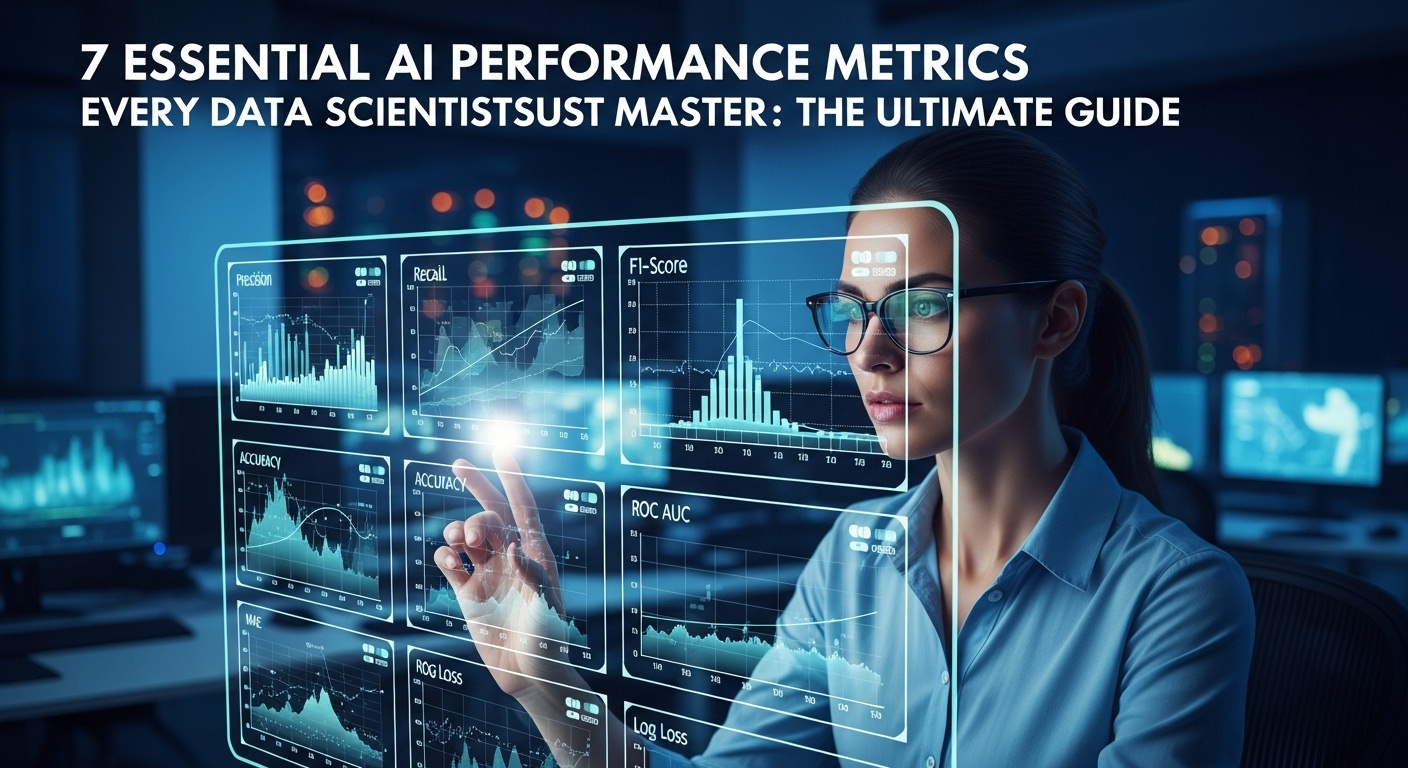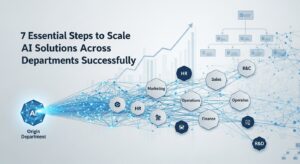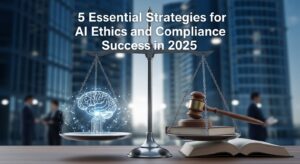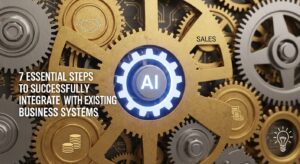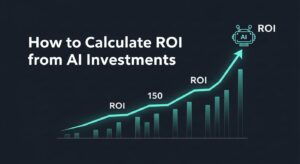How do you know if your artificial intelligence model is actually working? AI performance metrics serve as the compass that guides data scientists and machine learning engineers toward building reliable, effective systems. Without proper measurement techniques, even the most sophisticated AI models can fail spectacularly in real-world applications.
Consider this: What would happen if a medical diagnosis AI had 99% accuracy but missed every case of a rare but deadly disease? Or if a fraud detection system caught most fraudulent transactions but flagged 30% of legitimate purchases as suspicious? These scenarios highlight why understanding AI performance metrics goes beyond simple accuracy measurements.
In this comprehensive guide, we’ll explore the essential metrics that separate successful AI implementations from costly failures. Whether you’re evaluating classification models, regression systems, or cutting-edge deep learning architectures, mastering these measurement techniques will transform how you approach AI development.
Understanding the Foundation: What Are AI Performance Metrics?
Before diving into specific measurement techniques, let’s establish a clear framework. AI performance metrics are quantitative measures that evaluate how well an artificial intelligence system performs its intended task. These metrics help us answer critical questions:
- How accurate are the model’s predictions?
- Does the model perform consistently across different data subsets?
- Are there hidden biases affecting performance?
- How does the model handle edge cases and unusual inputs?
Think of AI performance metrics as a diagnostic toolkit. Just as doctors use multiple tests to assess patient health, data scientists employ various metrics to gain a complete picture of model performance. No single metric tells the whole story, which is why comprehensive evaluation requires multiple measurement approaches.
The Three Pillars of AI Performance Evaluation
Effective AI performance measurement rests on three fundamental pillars:
- Accuracy Assessment: How often does the model make correct predictions?
- Robustness Evaluation: How consistently does the model perform across different conditions?
- Efficiency Analysis: How well does the model balance performance with computational resources?
Each pillar requires specific AI performance metrics and measurement strategies, which we’ll explore in detail throughout this guide.
Classification Metrics: Measuring Discrete Prediction Performance
Classification tasks form the backbone of many AI applications, from email spam detection to image recognition. Understanding how to measure AI performance metrics for classification models is crucial for any data science practitioner.
Accuracy: The Starting Point for AI Performance Metrics
Accuracy represents the most intuitive AI performance metric – the percentage of correct predictions out of total predictions made. The formula is straightforward:
Accuracy = (True Positives + True Negatives) / Total Predictions
While accuracy provides a quick performance snapshot, it can be misleading in certain scenarios. Consider a dataset where 95% of examples belong to one class. A model that always predicts the majority class achieves 95% accuracy while learning nothing useful.
When should you rely on accuracy as your primary AI performance metric? Use accuracy when:
- Classes are relatively balanced
- All types of errors carry similar consequences
- You need a simple, interpretable metric for stakeholders
Precision and Recall: The Dynamic Duo of AI Performance Metrics
Precision and recall offer more nuanced insights into classification performance, especially for imbalanced datasets.
Precision answers: “Of all positive predictions, how many were actually correct?” Precision = True Positives / (True Positives + False Positives)
Recall answers: “Of all actual positive cases, how many did we correctly identify?” Recall = True Positives / (True Positives + False Negatives)
These AI performance metrics often exhibit a trade-off relationship. Increasing precision typically decreases recall, and vice versa. Understanding this trade-off helps you optimize models based on specific business requirements.
Scenario | Optimize For | Reason |
Medical Diagnosis | High Recall | Missing a disease case is more costly than false alarms |
Spam Detection | High Precision | False positives (legitimate emails marked as spam) frustrate users |
Fraud Detection | Balanced Approach | Both false positives and false negatives have significant costs |
F1-Score: Balancing Precision and Recall
The F1-score harmonically combines precision and recall into a single AI performance metric:
F1-Score = 2 × (Precision × Recall) / (Precision + Recall)
This metric proves particularly valuable when you need to optimize for both precision and recall simultaneously. The harmonic mean ensures that extremely low values in either precision or recall significantly impact the F1-score, making it a conservative measure of overall performance.
Regression Metrics: Evaluating Continuous Predictions
Regression tasks require different AI performance metrics since we’re predicting continuous values rather than discrete categories. These metrics help quantify how close our predictions are to actual values.
Mean Absolute Error (MAE): Understanding Average Prediction Deviation
MAE calculates the average absolute difference between predicted and actual values:
MAE = (1/n) × Σ|actual – predicted|
This AI performance metric offers several advantages:
- Easy to interpret (same units as the target variable)
- Robust to outliers
- Provides intuitive understanding of typical prediction error
MAE works exceptionally well when you want to understand the average magnitude of errors without considering their direction.
Root Mean Square Error (RMSE): Penalizing Large Errors
RMSE emphasizes larger errors more heavily than MAE:
RMSE = √[(1/n) × Σ(actual – predicted)²]
Use RMSE as your primary AI performance metric when:
- Large errors are disproportionately problematic
- You want to ensure model predictions stay within reasonable bounds
- Comparing models where outlier handling matters
R-Squared: Measuring Explained Variance
R-squared indicates how much variance in the target variable your model explains:
R² = 1 – (Sum of Squared Residuals / Total Sum of Squares)
Values range from 0 to 1 (higher is better), with 1 indicating perfect prediction. However, R-squared can be misleading with complex models that overfit training data.
Advanced AI Performance Metrics for Deep Learning
Modern deep learning applications require sophisticated AI performance metrics that capture nuanced aspects of model behavior.
Area Under the Curve (AUC-ROC): Threshold-Independent Evaluation
AUC-ROC measures a classifier’s ability to distinguish between classes across all classification thresholds. This AI performance metric proves invaluable when:
- You need threshold-independent evaluation
- Class distribution might change in production
- Ranking quality matters more than specific classifications
An AUC-ROC of 0.5 indicates random guessing, while 1.0 represents perfect classification.
Perplexity: Measuring Language Model Performance
For natural language processing tasks, perplexity quantifies how well a model predicts text sequences:
Perplexity = 2^(-1/N × Σ log₂(P(word|context)))
Lower perplexity indicates better language modeling performance. This AI performance metric helps evaluate:
- Text generation quality
- Language model comparison
- Translation system effectiveness
Specialized Metrics for Computer Vision
Computer vision applications require unique AI performance metrics that account for spatial relationships and visual perception.
Intersection over Union (IoU): Object Detection Precision
IoU measures overlap between predicted and actual bounding boxes:
IoU = Area of Overlap / Area of Union
This metric proves essential for:
- Object detection evaluation
- Semantic segmentation assessment
- Instance segmentation validation
Peak Signal-to-Noise Ratio (PSNR): Image Quality Assessment
PSNR quantifies image reconstruction quality:
PSNR = 10 × log₁₀(MAX²/MSE)
Higher PSNR values indicate better image quality, making this AI performance metric crucial for:
- Image denoising evaluation
- Super-resolution assessment
- Compression algorithm comparison
Business Impact Metrics: Connecting AI Performance to Value
Technical AI performance metrics tell only part of the story. Business impact metrics bridge the gap between model performance and organizational value.
Conversion Rate Impact
For recommendation systems and personalization engines, measure how AI performance metrics translate to business outcomes:
- Click-through rate improvements
- Conversion rate changes
- Revenue per user increases
User Engagement Metrics
Evaluate how model performance affects user behavior:
- Session duration changes
- Feature adoption rates
- User retention improvements
Operational Efficiency Gains
Quantify productivity improvements from AI implementation:
- Process automation percentages
- Error reduction rates
- Time savings per task
Best Practices for Implementing AI Performance Metrics
1. Establish Baseline Performance
Before implementing complex AI performance metrics, establish baseline performance using simple methods:
- Random prediction baselines
- Rule-based system performance
- Human expert performance levels
2. Use Cross-Validation for Robust Evaluation
Implement k-fold cross-validation to ensure AI performance metrics reflect true model capability rather than lucky training-test splits.
3. Monitor Performance Drift
Deploy systems to continuously track AI performance metrics in production:
- Data distribution changes
- Model accuracy degradation
- Performance across different user segments
4. Document Metric Selection Rationale
Clearly document why specific AI performance metrics were chosen for each project:
- Business requirements driving metric selection
- Trade-offs considered
- Expected performance thresholds
Common Pitfalls in AI Performance Measurement
Data Leakage: The Silent Performance Killer
Data leakage occurs when information from the future or target variable inadvertently influences model training. This leads to artificially inflated AI performance metrics that don’t reflect real-world performance.
Prevention strategies:
- Implement strict temporal splits for time-series data
- Carefully review feature engineering processes
- Use separate validation datasets from different time periods
Overfitting to Validation Sets
Repeatedly optimizing models based on validation AI performance metrics can lead to overfitting, where models perform well on validation data but poorly on new, unseen data.
Mitigation approaches:
- Use holdout test sets that remain untouched until final evaluation
- Implement early stopping based on validation performance plateaus
- Consider ensemble methods to reduce overfitting risk
Survivorship Bias in Performance Reporting
Organizations often highlight successful AI projects while downplaying or ignoring failures, creating a distorted view of typical AI performance metrics.
Best practices:
- Maintain comprehensive project performance databases
- Report both successful and unsuccessful implementations
- Analyze common factors in high-performing versus low-performing models
Tools and Frameworks for AI Performance Metrics
Python Libraries for Metric Calculation
Scikit-learn provides comprehensive metric implementations:
from sklearn.metrics import accuracy_score, precision_recall_fscore_support, roc_auc_score
TensorFlow/Keras offers built-in metrics for deep learning:
model.compile(metrics=['accuracy', 'precision', 'recall'])
PyTorch provides flexible metric computation:
import torchmetrics
accuracy = torchmetrics.Accuracy()
Automated ML Platforms
Modern AutoML platforms automatically compute relevant AI performance metrics:
- H2O.ai: Comprehensive automated metric reporting
- Google Cloud AutoML: Integrated performance dashboards
- Amazon SageMaker: Built-in model evaluation tools
Model Monitoring Solutions
Production AI systems require continuous AI performance metrics monitoring:
- MLflow: Open-source ML lifecycle management
- Weights & Biases: Experiment tracking and model monitoring
- Neptune.ai: Collaborative experiment management
Advanced Techniques for AI Performance Optimization
Hyperparameter Tuning Based on Multiple Metrics
Instead of optimizing for single AI performance metrics, consider multi-objective optimization:
Pareto optimization helps identify solutions that balance multiple competing metrics simultaneously. This approach proves particularly valuable when precision-recall trade-offs exist or when balancing performance with computational efficiency.
Ensemble Methods for Improved Metrics
Combining multiple models often leads to better AI performance metrics than individual models:
- Bagging reduces variance and improves stability
- Boosting focuses on difficult examples to improve overall performance
- Stacking learns optimal combinations of different model types
Adversarial Testing for Robustness Metrics
Evaluate model robustness using adversarial examples:
- Generate inputs designed to fool the model
- Measure performance degradation under adversarial conditions
- Develop AI performance metrics that account for robustness
Future Trends in AI Performance Measurement
Fairness and Bias Metrics
Modern AI applications require AI performance metrics that assess fairness across different demographic groups:
- Demographic parity measurements
- Equalized odds evaluation
- Individual fairness assessment
Explainability Metrics
As AI systems become more complex, measuring explainability becomes crucial:
- Feature importance consistency
- Prediction explanation quality
- Model transparency scores
Environmental Impact Metrics
Sustainable AI development requires metrics that measure environmental costs:
- Carbon footprint per training epoch
- Energy efficiency ratios
- Computational resource utilization
Conclusion: Mastering AI Performance Metrics for Success
Understanding how to measure AI performance metrics effectively separates successful AI practitioners from those who struggle with unreliable systems. The key lies not in memorizing formulas, but in understanding when and why to apply specific metrics for different scenarios.
Remember these essential principles:
- No single metric tells the complete performance story
- Business context should guide metric selection
- Continuous monitoring prevents performance degradation
- Multiple evaluation approaches provide comprehensive insights
As AI systems become increasingly sophisticated, AI performance metrics will continue evolving. Stay current with emerging measurement techniques, and always connect technical metrics to business value. The investment in comprehensive performance measurement pays dividends through more reliable, effective AI systems that deliver genuine value to users and organizations.
What aspects of AI performance metrics resonate most with your current challenges? Consider starting with fundamental classification or regression metrics, then gradually incorporating more sophisticated measurements as your expertise grows. The journey toward AI performance mastery begins with understanding these foundational concepts and consistently applying them to real-world problems.

